Popular Topics
Trip Report
Japan Train Tour
Do you wonder about Japan places to visit in winter? Here's our Japan winter itinerary - 10 days of exploring this beautiful country.
AsiaJapan11 days / January 2020
Highs & Lows
Watching the sun go down over Mt Fuji in Kamakura
Credit cards aren't accepted as widely as possible, so we had to find ATMs very frequently
Itinerary Overview
Japan is the most astonishing country.
We travelled all over Honshu (the main island) by bullet train from mega city Tokyo to ancient Kyoto, Neon food heaven Osaka to the coastal town of Kamakura, via bamboo forests, snowy mountains, beautiful temples and heartbreaking history.
This Japan winter itinerary includes famous landmarks such as the red gates of Fushimi Inari Taisha, the Tokyo Skytree, the giant red lanterns of Senso-ji, trendy Harajuku, the old Geisha districts of Kyoto, the A-Bomb dome of Hiroshima and the giant Daibutsu Buddah of Nara.
We'll also recommend some places to eat where you can try iconic Japanese dishes, and give some top tips about how to get the most out of a day in Disneysea.

Tokyo One of the most famous cities in the world, you HAVE to begin your trip in Tokyo. It's mindblowing!
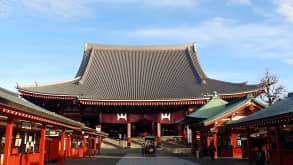
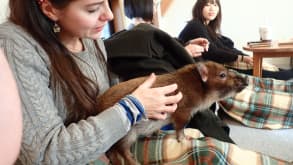

Embrace the culture shock and immerse yourself in this astonishing mega-city. Visit Senso Ji, Tokyo's most popular temple with its famous Thunder Gate and enormous red paper lanterns, head up to the observation deck of Tokyo Skytree (the 2nd tallest structure in the world after Burj Khalifa - pre booking required), and join a free tour of the Imperial Palace -Arrive by 12:15 to see if you can sign up for the free English tour of the inner grounds - head towards Kikyo-mon gate and look for the queue starting to form along the grass opposite. The first 300 people in line will be given a numbered ticket. You will need your passport for ID in order to register.
That evening, dive into the mad whirl of neon lights, maid cafes, electrical stores and game arcades in Akihabara. Have dinner in Creation Japanese Food 81+ , a cosy and authentic izakaya (a Japanese pub serving small plates) only 10 minutes walk from Akihabara station.
Day 2 in Tokyo
Start your day early at Meiji-Jingu shrine - walk through cool, peaceful forest to this important Shinto temple dedicated to the revered Emperor Meiji and his wife.
Next, head to Mipig cafe in Harajuku (pre booking online required), where you can have 30 minutes of cuddle time with adorable snuffly bristly micropigs. As the Japanese would say, "So Kawaii!!!" (So adorable!)
Walk down Takeshita Dori, the pedestrianised shopping street famous for its teenage fashion scene - shops sell brightly coloured and outrageous accessories, lolita baby doll dresses and other fantastic cosplay. There is also a large Daiso, the Japanese dollar store, which is great for souvenirs, and be sure to try some Instagrammable street snacks like the potato tornado, or rainbow candyfloss.
For lunch, cross Omotesando, the leafy wide road sometimes known as Tokyo's Champs Elysees past Kiddy Land, a five story toy shop that children and grown ups can all enjoy, down a side street to Harajuku Gyoza where you can get 6 delicious dumplings for only 290 Yen (about £2). Expect to queue at peak times!
When you're ready, get the subway back to Tokyo station and catch the shinkansen to Kyoto.
Top Tip - use your Japan Rail Pass to make a free reservation on your chosen bullet train the day before to guarantee a seat, and ask to sit on the right hand side of the train for a chance to spot Mt Fuji out of the window.
Once in Kyoto, have dinner in the station at Sushi No Musashi, a conveyor belt sushi restaurant with many dishes costing only 164 Yen (around £1).
Why not book yourself into a pod hotel for a futuristic Japanese experience? One night is enough, so book elsewhere for the next 3 nights.

Kyoto Kyoto is ancient, with beautiful Geisha, historic temples and amazing food!


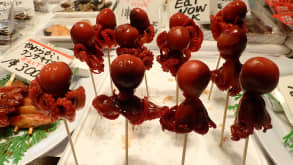 1+
1+Catch an early JR train to Saga Arashiyama (aim to arrive before half 8 to avoid crowds) to visit the famous bamboo grove. Walk through the sky high greenery to Okochi Sanso, the beautiful hillside villa and zen gardens that once belonged to Denjiro Okochi , a famous Japanese silent movie actor. The 1000 Yen entry fee also includes a cup of green tea in the tea house.
Take the JR train as far as Emmachi station and catch the bus to Kinkakuji Temple, with its stunning golden pavillion reflected in a lake. Then catch the bus as far as Nijo Castle and walk for half an hour to Nishiki Market for lunch. Take advantage of the free samples on offer, and try the huge range of streetfood on offer, from miniature octopus on a stick to pickled vegetables, grilled yakitori chicken skewers and sembei crackers.
NB: eating on the hoof is a definite no no in Japan, so eat your purchases next to the stalls before moving on.
Finally, take an evening stroll around Gion. Best enjoyed after dark, this is Kyoto's famous geisha district so keep an eye out as you explore the old streets of 17th century wooden tea houses and restaurants to see if you can spot any. Please be sure to be respectful of these women and do not follow them or take photos of them. Pay a visit to Yasaka Shrine to see its beautiful illuminated paper lanterns, and head to Gion Yuki for dinner - a fantastic izakaya with seats around the bustling kitchen.
Day 2 in Kyoto:
Another early train, this time on the JR Nara line to Inari (make sure it's a "local" train, the rapid trains don't stop at Inari!) to visit the mindblowing Fushimi Inari Taisha, a shinto shrine complex world famous for its astonishing tunnels of red torii gates making their way up the sacred mountain through beautiful Japanese forest. Be sure to persevere all the way to the top, as crowds get thinner the higher you go and the place is far more mystical and zen when it's quieter.
Take the Keihan line train from Inari to Kiyomizu Gojo and walk to Kiyomizu Dera, a beautiful Buddhist temple complex and UNESCO World Heritage Site. Be sure to explore the whole site, including the beautiful pagodas, the impressive huge main hall with its large veranda and the Jishu shrine dedicated to matchmaking, complete with a pair of love stones. It is said that if a pilgrim can walk from one stone to the other with their eyes closed, they will find true love.
Walk the old stone paved paths lined with wooden shops past the stunning wooden pagoda of Hōkan-ji Temple, and wind your way down Nineizaka (keep an eye out for a Starbucks in disguise!) towards Maruyama Park. Cross straight over the park to visit Chion In and then walk further still to Nanzen Ji and Eikan Do. A bus from nearby will take you all the way back to Kyoto station.

Nara Stunning temples and bowing deer
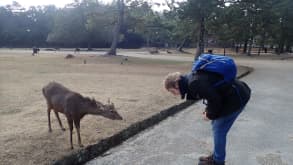
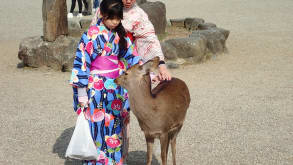

Nara is a really easy day trip from Kyoto. Take the rapid JR train from Kyoto station, and you'll arrive in the ancient capital in about an hour. Is it just us, or is it starting to feel like every city in Japan has had a turn at being the capital...??
From the station it's an easy walk to Nara-Koen, a huge park containing many of Nara's famous sights, and you can spend a really nice day doing a lap of them. Don't miss Kofuku-ji and its five story pagoda, Jaw dropping Todai-ji with its Daibutsu (Great Buddha) and subtemples, Nigatsu-do and Sangatsu-do, Kasuga Taisha (a beautiful grand shinto shrine with long avenues of mossy stone lanterns, and of course, Nara's most famous residents, the bowing deer.
For about 200 yen you can buy a stack of deer sembei, special crackers designed for the deer. If you bow respectfully to a deer, many of them will bow back in return for a tasty reward! Try to approach a deer by itself so you don't get overwhelmed by a group (they sure want those biscuits!), and don't tease the deer! If they bow, give them the cracker.
Spend the night back in Kyoto.

Hiroshima Emotionally hard but incredibly important to visit, this was where the first nuclear bomb fell in 1945.

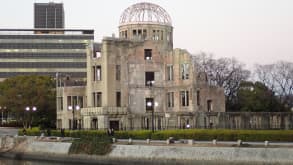
 1+
1+Catch the Hikari bullet train to Hiroshima from Kyoto. It takes about 2 hours including a change at Shin Osaka or Shin Kobe.
Spend a few hours in the Hiroshima Peace Memorial Museum, which documents the atomic bombing of Hiroshima in 1945. Today will be a tough one, the stories of human suffering and some of the photographs in the museum are very upsetting, but it's very important for everyone to visit and understand why that nuclear war can never happen.
Other things to see around the Peace Memorial Park are the Hiroshima National Peace Memorial Hall for the Atomic Bomb Victims, the haunting remains of the A-Bomb Dome, now a UNESCO World Heritage Site which stood only 160m away from the hypocenter of the bomb blast, the Peace Flame, which will only be extinguished once all nuclear weapons have been destroyed, the Memorial Cenotaph, the Children's Peace Monument with its beautiful collection of brightly coloured paper cranes, the Atomic Bomb Memorial Mound containing the cremated ashes of 70,000 unidentified victims of the bomb, the Memorial Tower to the Mobilized Students. There are even some trees in the park still deeply scarred by the heat of the bomb blast.
Before you leave the park, ring the Peace Bell with a prayer for world peace. Its beautiful world map on the surface has no border lines, and is meant to symbolise a unified world.
After a sobering and emotional day, it is time to celebrate the rebirth of the city and the current residents and raise a glass over dinner to world peace. The city's signature dish is Okonomiyaki, a savoury pancake made of pork, cabbage, seafood, eggs, green onion and topped with fish flakes and a sweet savoury sauce. It's astonishingly good. A great place to try this is at Okonomiyaki-mura, a building with 24 small restaurants all specialising in the dish. Sit round the metal teppan griddle and watch your meal be cooked in front of you! You then eat it with a small metal spatula and chop sticks.

Himeji Castle A classic, original Japanese castle, and a must for 007 fans...

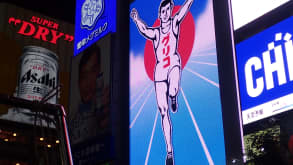
Catch a Sakura bullet train (not Komada, very slow!) towards Osaka but get off at Himeji.
From the train platform you will be able to see the white walls of Himeji castle soaring into the sky. One of the country's few original feudal castles (unlike many others which are post WWII rebuilds), 400 year old Himeji-jo is both a National Treasure and a UNESCO World Heritage Site. 007 fans might also recognise the castle as Tiger Tanaka's ninja training school in You Only Live Twice. You can climb to the top of the 6 story main keep, and explore the gates and baileys that make up the castle grounds. Be aware that this place gets VERY busy in cherry blossom season!
For about 35p more, you can get a combined entry ticket for the castle and nearby Kokoen Gardens, a really lovely stroll through nine separate gardens designed in traditional Japanese styles of the Edo Period, including a beautiful koi pond with a waterfall, a flower garden, a bamboo garden and a garden of pines.
Back at Himeji station, catch the shinkansen another 40 minutes to Shin Osaka, Japan's 3rd largest city and foodie heaven. We couldn't help but think of Blade Runner here, as people hurried through the rainy neon lit streets with see through umbrellas. It has a futuristic, kind of grimy-but-in-a-good-way feel that is totally different to polished Kyoto and Tokyo. Spend the evening exploring Dotonbori street, eating all the good street food. Gyoza, kushikatsu (amazing fried things on sticks , everything from beef to garlic) and Osaka's speciality, Takoyaki (octopus dumplings) were all high on our list. We'd also recommend an after dark 20 minute boat trip down the canal to see all the famous neon signs like the Glica running man.
Sleep in Osaka

Osaka Neon lights and food heaven
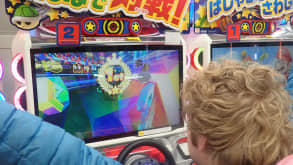


Start your day at Namba Yasaka Shrine, in front of its enormous, outrageous 12 meter high lion head temple stage. It reminded us of the cave of wonders in Aladdin, and is certainly something different if you're a bit "templed out" after Kyoto. It's gaping mouth is supposed to swallow your troubles, leaving you free and happy!
From here, head to DenDen Town and spend some time (and spare change) in the arcades. We actually preferred DenDen Town to Tokyo's Akihabara, it felt much more friendly and accessible. Some of the game and manga shops in Akihabara felt a bit snooty somehow, unwelcoming, like Superpotato, but the Osaka branch couldn't have been more different.
There are so many fun arcade games to play, and lots of them are only 100 yen (70p!) for a decent length go. We especially loved Mario Kart racing and Taiko No Tatsujin, a Japanese drumming game a bit like guitar hero or a dance mat. So addictive!
From DenDen Town head to Kuramon Market for juicy crab sticks and tako tamago, a miniature octupus on a stick stuffed with a quail egg. If you didn't already try one in Kyoto's Nishiki Market, now is your chance! It looks intimidating but it's so delicious.
For actual "lunch proper", we went to Shinsekai with its Blackpool-esque Tsutenkaku Tower, and walked past all the brightly coloured restaurant signs to Kushikatsu Horumon Asahi, a no frills restaurant with cheap kushikatsu and huge bowls of ramen.
After lunch, visit Shitennoji Temple, before taking the lift up to the 16th floor of the Anebo Hurukas building for a free observation deck view over the city.
Finish the day with a stroll around the grounds of Osaka Castle. The keep itself is a 90s rebuild, but the enormous stone walls around the moat are original. For a final hurrah, head to a karaoke joint - we loved Rainbow Karaoke on Dotonbori - a bargainous 600 yen for 2 hours singing and all you can drink soft drinks!

Tokyo A world famous art installation and base camp before the train up north


Catch the shinkansen back to Tokyo, and ask for a seat on left for another chance to see Mt Fuji. Once back in town, head to Teamlab Borderless, the astonishing interactive art installation and Instagram paradise. Walking through the light and video displays is incredibly calming, and the intelligent art responds to you - "water" flows across the floor and pools around your feet like a rock in a stream. Petals fall from blossoms as you touch the walls and there are even places where you can draw your own creature, scan it and set it free into the space! Be sure to do several laps as the rooms are always changing - artworks move and walk from space to space. Some installations are more popular than others and you may need to queue, but if you come back around again towards the end of the day it gets much quieter. At lunchtime the Floating Nest exhibit had a 90 minute queue, 30 minutes before closing it was less than 20 minutes. We recommend booking Teamlab tickets online to guarantee entry on the day - if it sells out online no tickets are available on the door.
Have dinner in one of the tiny smoky izakaya eateries down Omoide Yokocho, Shinjuku, a narrow alleyway lined with lanterns. Some have steep cover charges so shop around, and squeeze into one for tasty small plates and beer. We recommend the yakitori, or grilled chicken skewers.

Shibu Hotel Hot spring onsens and snow monkeys



Catch the train to Nagano, then change onto the Nagano-Dentetsu line (not a JR line, buy a ticket in the station) to Yudanaka. The express is only about 30 minutes quicker, and we'd actually recommend getting the slower local train if you're in no rush - it was really interesting to stop at all the small mountain farming communities as the train winds its way through incredible scenery!
Either arrange a pick up with your accomodation from Yudanaka station, or walk the 25 minutes to Shibu Onsen. We stayed at Senshinkan Matsuya , a beautiful old traditional Ryokan building, and honestly couldn't recommend it more. Ideally located in the middle of all the public hot spring baths, with gorgeous trad rooms - tatami mat floors, futon beds and a low table complete with foot heater- and outstanding food. Our dinner, served sat on the floor at low tables, consisted of at least 16 small dishes, and breakfast was the same - multi course and all local ingredients!
Even if you don't stay here, choose a ryokan that includes meals - we didn't see any restaurants in the little town!
Spend the afternoon visiting all nine public onsens before dinner in your ryokan - only people staying in the town can have a key to the baths, and your hotel will provide traditional yukata robes and wooden geta to wear as you walk around the town. Be aware that in accordance with onsen culture, you need to bathe naked (genders are separated into different buildings), but once you've got over the initial "oh wow I'm so naked" moment, it's actually very liberating!

Shibu Hotel Snow Monkeys!


nother amazing reason to stay at Senshinkan Matsuya is that they give you a free ride to the Jigokudani Snow Monkey Park early in the morning, which means you can get some time watching the monkeys before the mass tour groups arrive from Nagano. They drop you at the bottom of the hill, and you follow a path up through beautiful forest until you reach the ticket counter. The wild Japanese Macaques live on the hillside just beyond, and you can watch them playing, eating and grooming amongst the rocks, and in cold weather, relaxing in their own hot spring pool!
If you walk back out of the monkey park and down the hill to the Roman museum/cafe, this is where you can catch a coach all the way back to Nagano, where you can hop back on the JR line shinkansen to Tokyo. You buy a bus ticket from a little kiosk in the carpark, and you can admire the spectacular views of the mountains while you wait.
Expect to be back in Tokyo by half 3/4ish, and head to Tamachi station where you can walk to the Rainbow Bridge. Like the Golden Gate Bridge in San Francisco, this huge bridge over the bay has a pedestrian walkway either side of the road. We recommend the north side of the bridge for views of Tokyo skyline - especially impressive as the sun goes down and everything starts to light up!
Sleep in Tokyo

Tokyo You're still not finsished here yet!

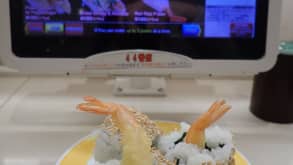
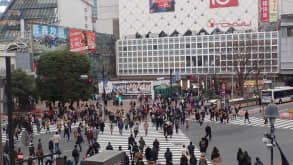
Start your last day in Tokyo at Shibuya Crossing, the busiest pedestrian crossing interchange in the world. This scramble crossing is absolutely mad, and great fun to cross en masse with the huge crowds that gather (at peak times more than 3000 people). For a view of the crossing, head to the Starbucks opposite. We definitely felt like we were in a city of 39 million people here.
Spend some time exploring the cool shops in the area. We enjoyed the 3 story Disney Store shaped like a castle, and the super nostalgic Nintendo store and Pokemon Centre (surprisingly dark and edgy with a giant Mewtwo suspended in a test tube and Pokemon graffiti on the walls), both on the 6th floor of the Parco department store.
For lunch, you have to go to Genki Sushi! Sit in front of a little screen, order what ever you like, and it arrives on a little tray on wheels along the train track around the restaurant!So much fun, and many plates are about £2 each. It's popular, so we'd recommend getting there slightly early for lunch, around 12ish - by 1 it was very busy.
In the afternoon we nipped back to Harajuku for some souvenir shopping before heading over to Shinjuku to go up the Tokyo Government Metropolitan Building - their observation deck on the 45th floor is totally free and gives great views over the city from 202 meters up!
Once it gets dark, spend some time exploring the neon lit Kabukicho red light district of Shinjuku. Enter under an electric red Torii gate and check out the dazzling outside of the Robot Restaurant and see if you can spot Godzilla's head over the Gracery Hotel. Finish the night at Golden Gai, a couple of blocks absolutely crammed with around 200 tiny ramshackle bars. Some only cater to locals (they will have signs in Japanese or "members only" on the doors), look for English menus! Some charge cover charge, some will waive it if you sit and drink for no more than 30 minutes (the smallest bars seat less than 10, so can't afford you to sit and nurse one pint all night!), some have no cover charge. Head up a narrow staircase or two and try your luck!

Tokyo DisneySea A totally unique Disney park

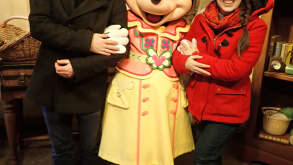
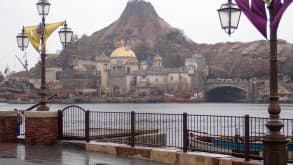 2+
2+We couldn't come to Tokyo and not visit a theme park. We've been to the Magic Kingdom in Paris and Orlando, and so decided to visit a unique park, Disneysea.
Open since 2001, the park has an overall nautical theme, with different worlds to explore, including Mermaid lagoon (Little Mermaid themed), Arabian Coast (Aladdin) and Port Discovery (Finding Nemo). A lot of the rides aren't Disney themed, such as Journey to the Centre of the Earth and Soaring: Fantastic Flight, but still amazing (these two plus Indiana Jones were our favourites), and the American Waterfront features Disney classic, Tower of Terror, and the brilliant Toy Story Mania, a VR goggles ride full of carnival shooting gallery style games.
Arrive at 8 when the park opens, you'll want the full day, and take advantage of their fast pass system where you can scan your ticket and receive a timed slot for your favourite rides. This means you can come back later and join the much shorter fast pass queue. Genius! Bare in mind the early slots for the most rides go fast (by 12pm we were given a 5pm slot for Toy Story Mania), so we would recommend going to your #1 pick as soon as the park opens, getting a pass, and then going to your #2 pick before queues build up. And try the flavoured popcorn! We had garlic shrimp, delish!

Kamakura A charming seaside town with stunning temples, a massive Buddha, unique food and Fuji views as you paddle in the Pacific

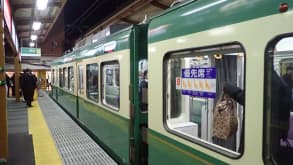
 2+
2+Catch the JR Yokesuka train to Kamakura from Tokyo station (about an hour) and spend the day exploring this fab seaside town. Start at Tsurugaoka Hachiman-gu, a magnificent shinto shrine, and the most important in the city, and then head to the mysterious cave temple of Zeniarai Benzaiten, where if you wash your money in the small baskets provided, it will come back to you five fold once you spend it. Stand in wonder in front of the Kotoko-in Daibutsu - this 48ft 121 ton Buddha has the most zen, calm face and since 1252 has survived earthquakes, typhoons and even a tsunami that swept away its wooden building. 10 minutes away is Hase Dera temple, a beautiful hillside complex famous for its 8th century 9m wooden statue of Buddhist deity Kannon carved from a single tree, and its hundreds of Jizo statues dedicated to lost infants. The temple grounds have lovely views over the sea, and votive oyster shells hanging from coloured string.
Take the Enoden electric railway from Hase station to Enoshima, and keep your eyes out for Mt Fuji views. On a clear day you'll get staggering views of the colossal mountain rising over the bay. If the weather is kind, we'd recommend getting some lunch from a 7/11 and sitting on Katese Nishihama Beach while looking at Fuji (just be wary of black kite hawks!). Then walk over the causeway to Enoshima island to explore the shinto shrine split into three parts up the hill. Try the local speciality of tako sembei or octopus cracker - a thin savoury A4 sized sheet that looks like octopus stained glass or a fossil.
Try to be at the top of the island by sunset to watch the clouds turn pink over Mt Fuji.
Catch the electric train back to Kamakura and the JR train back to Tokyo.
We flew back to London at 23:50 that night from Haneda Airport
Q & A
What would you have changed?
We'd have taken way more cash! Turns out cards aren't nearly as widely used as you'd expect in Japan, cash is still king!Anything go wrong during the trip?
We got on the wrong train to Fushimi Inari, make sure you take the slow train that stops everywhere, the Rapid skips Inari!Restaurant recommendations?
Gion Yuki (Kyoto), Genki Sushi (Tokyo) and any street market!Tips you would give a friend?
Buy a Japan Rail pass! It will literally save you a fortune on your Japan train tour. And reserve your bullet train seats the day before.Packing tips?
Japan in winter wasn't as cold as we'd expected, more like British weather.Transportation Tips?
Stick to JR line metro trains to save money as you can use your rail pass on them.Any surprises?
You will be sent an e ticket for Disneysea but you still have to physically print it off and take it to the park - you can't scan your phone at the barriers.Booking details?
We booked all our hotels with Booking.com and flew with Air France who were excellent. Book the Tokyo Skytree on Expedia to save a few pounds.
Lodging
Tokyo has many many hotels to choose from. We'd recommend somewhere central and near an underground station, like the Best Western, Akihabara.
We stayed in a real mix to explore the range of accomodations in Japan. We stayed our first night in a pod hotel and another night in a self catered apartment. We'd recommend 2 nights of luxury at Kyoto Yura MGallery.
There are plenty of budget friendly basic hotels in the centre.
Like any big city Osaka has a wide range of hotels to suit all budgets.
Back in our Best Western Akihabara
Stay in a traditional Ryokan like Senshinkan Matsuya which includes incredible dinner and breakfast and a transfer to see the snow monkeys.



